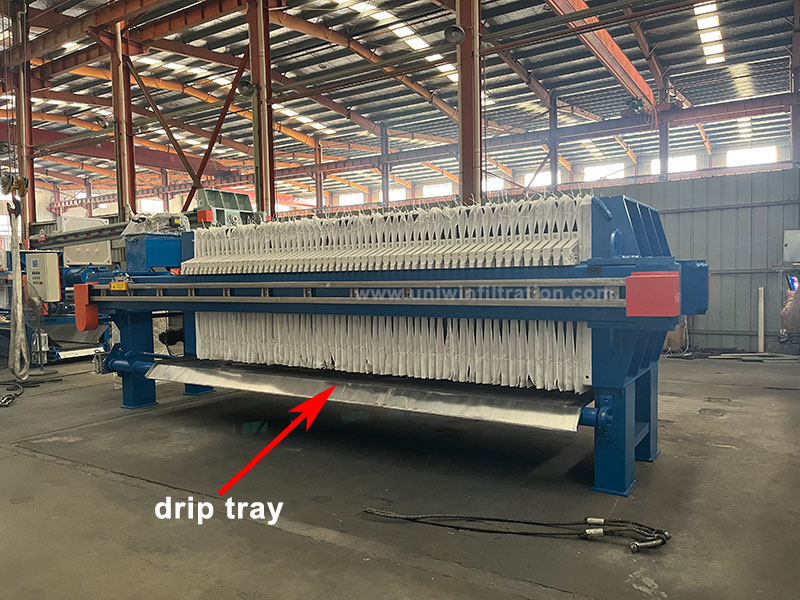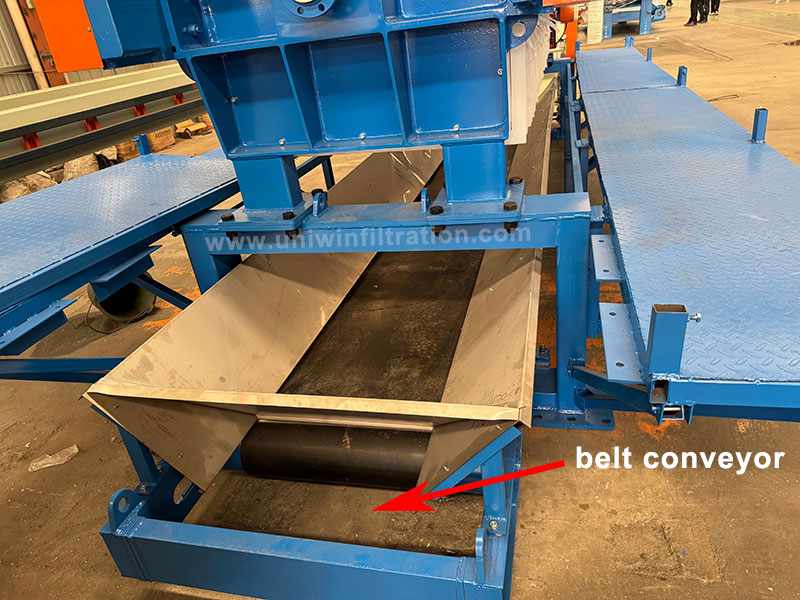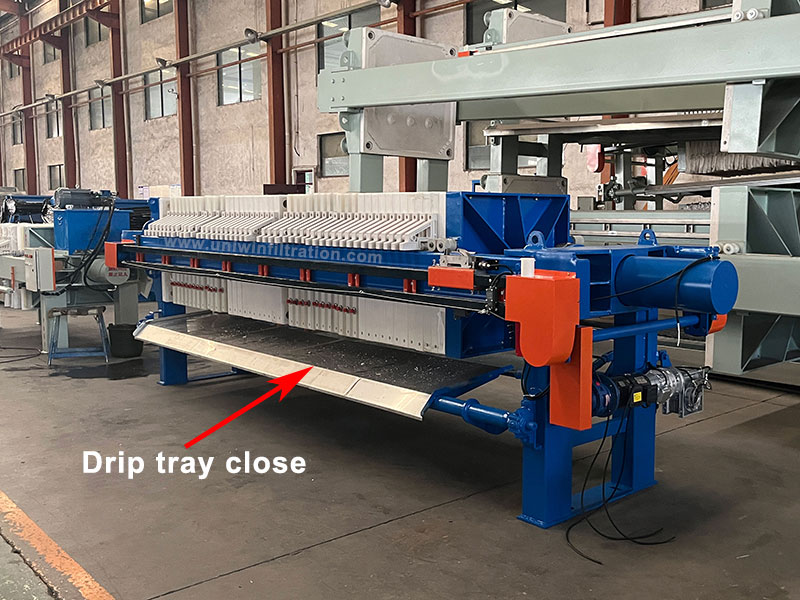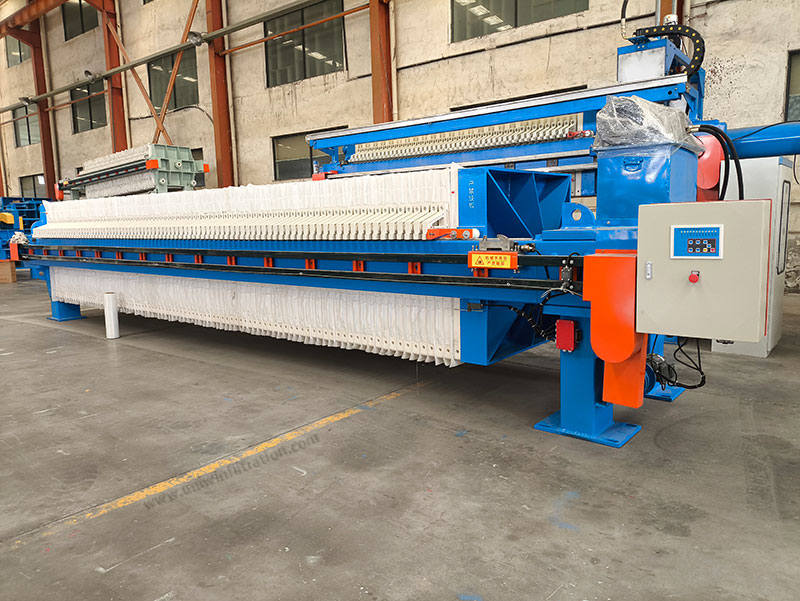Why Does a Filter Press Use a Drip Tray?
A filter press drip tray is a retractable metal plate structure and a critical auxiliary structure for the filter press. Typically made of stainless steel or carbon steel, it is installed beneath the filter plates to guide the filter cake down to a conveyor belt or collection trough.
The drip tray’s primary function is to automatically flip open or close after the filter plates are opened, guiding the filter cake down to the conveyor system below. This prevents spillage and contamination of the surrounding environment.
How Does a Drip Tray Work?
The operation of a drip tray is typically synchronized with the operation of the filter press. Its basic workflow is as follows:
- When the filter press begins operation, the drip tray is closed, forming a closed flow-guiding structure. After separating from the filter cloth, the filtrate flows along the surface of the drip tray to the sump on either side, and then into the subsequent treatment system.
- After filtration is complete, the filter plates automatically open. Once the plates separate, the filter cake begins to naturally fall off. The drip tray opens simultaneously. When the filter plates separate, the drip tray is driven by a pneumatic cylinder, motor, or hydraulic system to flip open, forming a “V” shape. The filter cake then falls under gravity onto a conveyor belt or hopper below the drip tray.
- After discharge is complete, the drip tray closes and resets, preparing for the next filtration cycle.
The entire process can be linked with the PLC control system of the filter press to achieve unmanned and automated continuous operation.

Advantages of a Drip Tray
Prevents filtrate from contaminating the filter cake
During the filtration process, the drip tray remains closed, effectively directing the filtrate into the sump on either side. This prevents filtrate from dripping onto the filter cake below, preventing secondary wetting or contamination of the filter cake, thereby ensuring the dryness and quality of the filter cake.
Improved unloading efficiency
After filtration, the drip tray automatically opens, allowing the filter cake to fall smoothly and centrally onto the conveyor belt or hopper below, preventing accumulation or jamming. This significantly improves filter cake unloading efficiency and is suitable for continuously operating automated production lines.

Keep the bottom of the filter press clean
The drip tray prevents filtrate and residual material from falling directly into the bottom area of the filter press, effectively reducing equipment contamination and liquid splashing. This keeps the filter press bottom and surrounding area clean, reducing cleaning frequency and maintenance costs.
Extending the life of the conveying system
The drip tray’s cushioning and diversion functions prevent filter cake from directly impacting the conveyor belt or hopper bottom, reducing mechanical wear, extending the life of conveying equipment, and improving system stability.
Supporting Automated Control
Most drip tray systems support pneumatic, electric, or hydraulic actuation and can be linked to a PLC system to achieve fully automated control of the entire process, including filtration, unloading, and conveying. This reduces manual operation and improves operational efficiency.

Conclusion
Drip tray not only improves filter press efficiency but also demonstrates significant advantages in protecting filter cake quality, ensuring equipment safety, and promoting system automation. For applications requiring efficient, clean, and automated operation, filter presses equipped with high-performance drip trays are undoubtedly a more competitive choice.

